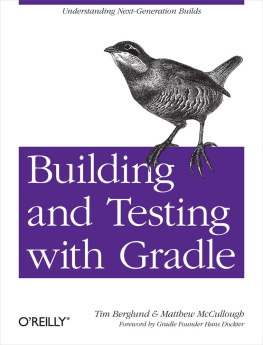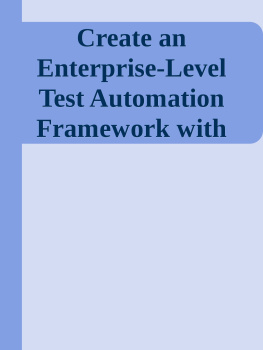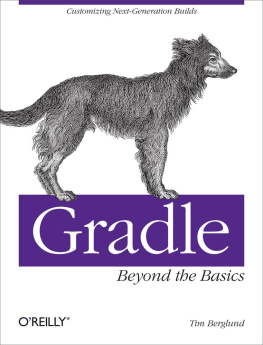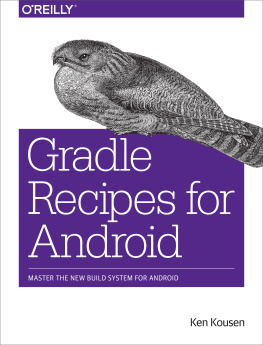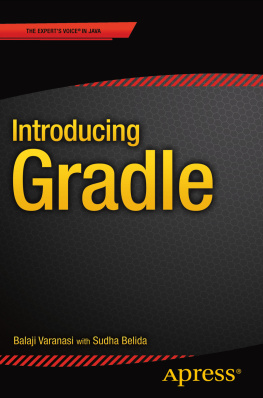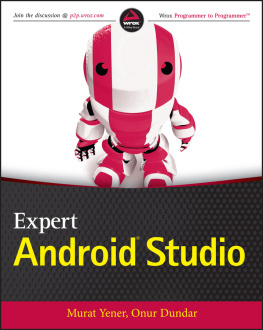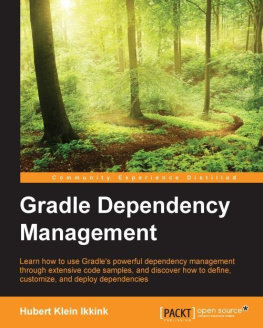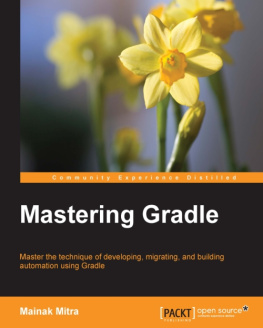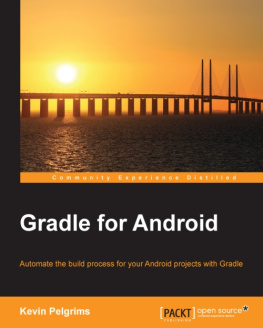McCullough Matthew J. - Building and Testing with Gradle
Here you can read online McCullough Matthew J. - Building and Testing with Gradle full text of the book (entire story) in english for free. Download pdf and epub, get meaning, cover and reviews about this ebook. City: Sebastopol, CA, year: 2011, publisher: OReilly Media, genre: Computer. Description of the work, (preface) as well as reviews are available. Best literature library LitArk.com created for fans of good reading and offers a wide selection of genres:
Romance novel
Science fiction
Adventure
Detective
Science
History
Home and family
Prose
Art
Politics
Computer
Non-fiction
Religion
Business
Children
Humor
Choose a favorite category and find really read worthwhile books. Enjoy immersion in the world of imagination, feel the emotions of the characters or learn something new for yourself, make an fascinating discovery.
- Book:Building and Testing with Gradle
- Author:
- Publisher:OReilly Media
- Genre:
- Year:2011
- City:Sebastopol, CA
- Rating:5 / 5
- Favourites:Add to favourites
- Your mark:
Building and Testing with Gradle: summary, description and annotation
We offer to read an annotation, description, summary or preface (depends on what the author of the book "Building and Testing with Gradle" wrote himself). If you haven't found the necessary information about the book — write in the comments, we will try to find it.
Build and test software written in Java and many other languages with Gradle, the open source project automation tool thats getting a lot of attention. This concise introduction provides numerous code examples to help you explore Gradle, both as a build tool and as a complete solution for automating the compilation, test, and release process of simple and enterprise-level applications. Discover how Gradle improves on the best ideas of Ant, Maven, and other build tools, with standards for developers who want them and lots of flexibility for those who prefer less structure. Use Gradle with Groovy, Clojure, Scala, and languages beyond the JVM, such as Flex and CGet started building a simple Java program using Gradles command line tooling and a small build scriptLearn how to configure and construct tasks, Gradles fundamental unit of build activityTake advantage of Gradles integration with AntUse Gradle to integrate with or transition from Maven, and to build software more cleanlyPerform application unit and integration tests using JUnit, TestNG, Spock, and Geb. Read more...
Abstract: Annotation
Build and test software written in Java and many other languages with Gradle, the open source project automation tool thats getting a lot of attention. This concise introduction provides numerous code examples to help you explore Gradle, both as a build tool and as a complete solution for automating the compilation, test, and release process of simple and enterprise-level applications. Discover how Gradle improves on the best ideas of Ant, Maven, and other build tools, with standards for developers who want them and lots of flexibility for those who prefer less structure. Use Gradle with Groovy, Clojure, Scala, and languages beyond the JVM, such as Flex and CGet started building a simple Java program using Gradles command line tooling and a small build scriptLearn how to configure and construct tasks, Gradles fundamental unit of build activityTake advantage of Gradles integration with AntUse Gradle to integrate with or transition from Maven, and to build software more cleanlyPerform application unit and integration tests using JUnit, TestNG, Spock, and Geb
McCullough Matthew J.: author's other books
Who wrote Building and Testing with Gradle? Find out the surname, the name of the author of the book and a list of all author's works by series.

